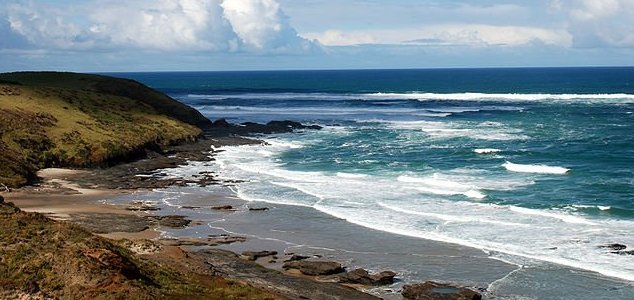Palaeontology
June 16, 2014 · 22 comments
22 comments

Some early fish were much larger than expected. Image Credit: CC BY-SA 2.0 Phillip Capper
Known as Megamastax amblyodus ( which means Big Mouth Blunt Tooth ), this ancient species would have fed on smaller animals as it prowled the prehistoric seas.
Thought to be the earliest vertebrate apex predator ever discovered in the fossil record, Big Mouth was a lot larger than anything else in the ocean at the time.
Scientists believe that competition among fish may have contributed to its abnormal size.
"During the Silurian period, the South China Sea, then at the equator, was the cradle of early jawed vertebrates, thus the ecological competition among these creatures was very intense," said study co-author Min Zhu.
Source: Discovery news | Comments (22)
How large were Earth's earliest animals ?
By T.K. RandallJune 16, 2014 ·
 22 comments
22 comments
Some early fish were much larger than expected. Image Credit: CC BY-SA 2.0 Phillip Capper
Palaentologists have discovered the fossil remains of a large fish dating back 423 million years.
Up until now it has been generally believed that most of the Earth's earliest creatures were rather on the small side, but the finding of a 1m-long fish that lived nearly 200 million years before the dinosaurs appeared has turned this idea on its head.Known as Megamastax amblyodus ( which means Big Mouth Blunt Tooth ), this ancient species would have fed on smaller animals as it prowled the prehistoric seas.
Scientists believe that competition among fish may have contributed to its abnormal size.
"During the Silurian period, the South China Sea, then at the equator, was the cradle of early jawed vertebrates, thus the ecological competition among these creatures was very intense," said study co-author Min Zhu.
Source: Discovery news | Comments (22)

The Unexplained Mysteries
Book of Weird News
AVAILABLE NOW
Take a walk on the weird side with this compilation of some of the weirdest stories ever to grace the pages of a newspaper.
Click here to learn more

Support us on Patreon
BONUS CONTENTFor less than the cost of a cup of coffee, you can gain access to a wide range of exclusive perks including our popular 'Lost Ghost Stories' series.
Click here to learn more
Spirituality, Religion and Beliefs
Cryptozoology, Myths and Legends
Israel, Palestine and the Middle-East
United States and the Americas
Total Posts: 7,774,587 Topics: 325,337 Members: 203,840
Not a member yet ? Click here to join - registration is free and only takes a moment!
Not a member yet ? Click here to join - registration is free and only takes a moment!































Please Login or Register to post a comment.